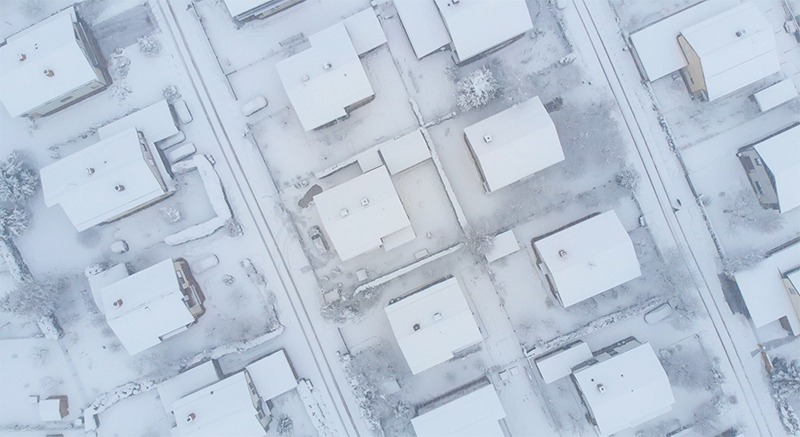How does winter roofing work? Roof replacements do take place in the winter, but there are some important factors to take into consideration. In this article we take a deeper look at the ins and outs of roofing in the winter season.
is winter roofing possible?
It’s no surprise that winter is not the optimal season for roof installations. With harsher weather conditions and shorter days, roofing projects tend to be more difficult and take a bit longer. However, it is absolutely possible to replace a roof during the winter months. In fact, many high-quality roofs are installed in the wintertime.
New construction roofs take place year-round. However, because winter conditions are the least optimal for roof installation, roof replacements during this time of the year are most often done in either emergency situations or if putting off a repair/replacement will cause significantly more damage and money in the long run.
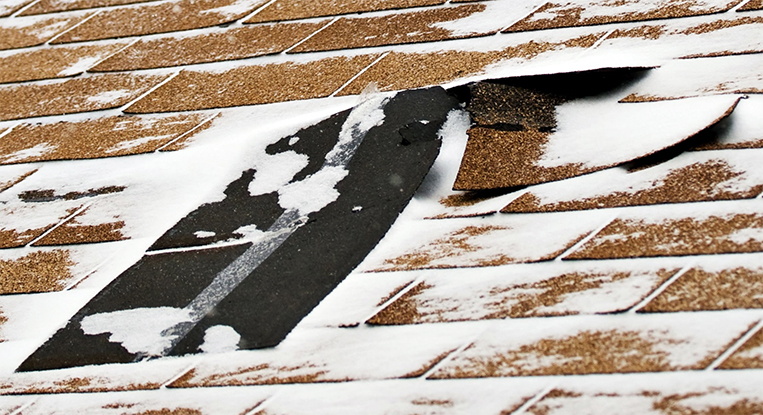
For example, if snow and ice are causing an active leak, it is highly advised to have a repair, or a replacement as necessary, completed as soon as possible. Leaks without immediate attention can not only damage the interior of your home but can also contribute to a wider extent of damage to your roof and drive up the cost of restoration.
This is especially true in the winter season. When you consider the stress put on your roof from the extra weight of snow and ice, you will find that unaddressed repairs can quickly go from an easy fix to a costly restoration.
how does forecast play a role in winter roofing?
Due to the fact that cold temperatures effect the pliability of roofing materials, the forecast plays a huge role in scheduling a winter roof repair. Typically, contractors will try to schedule a new roof installation after a relatively warm night so that materials are easier to efficiently install.
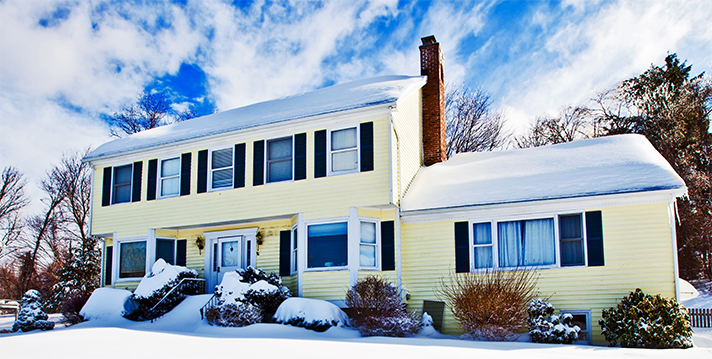
Experienced contractors will schedule an installation keeping future forecast in mind. Since winter roofing often takes a bit more time and effort as compared to roofing in the warm seasons, it requires more careful consideration of the forecast. It is important to keep in mind that forecasts can change often and dramatically. You and your contractor should look further out into the forecast when determining the optimal start date for your roofing project. The type of roofing system will also play a key role in planning.
Just as roof installations are scheduled around rain in the warmer months, winter installations must be scheduled around snow and ice storms. This can become even trickier as installations require a clear roof. That is, a roof must be free of snow in order for an installation to take place. This sometimes means waiting several days or longer following a snowstorm to begin an installation or repair project.
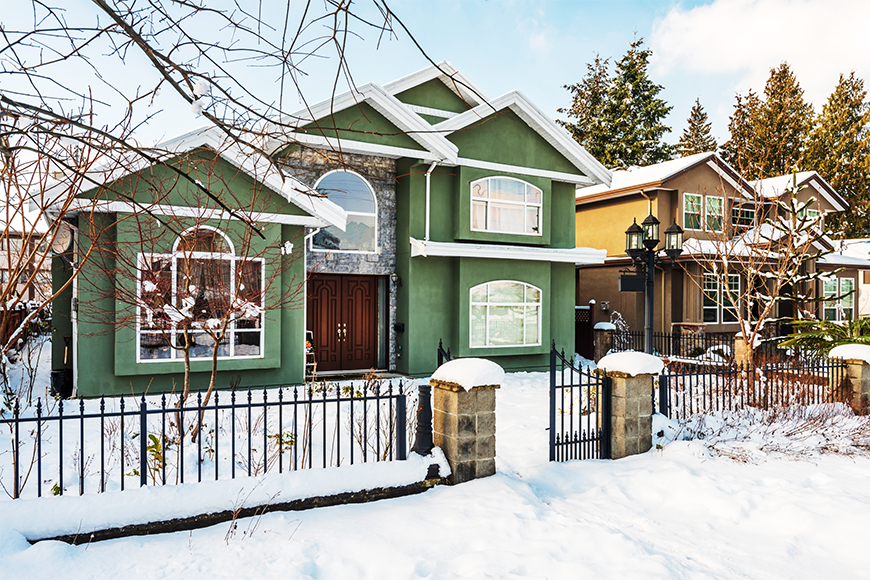
Please do not attempt to clear snow off your roof in preparation for an installation or repair. Roofs can become extemely slick and dangerous when they hold snow, ice, or water. Furthermore, if you are planning on having work done on your roof, its integrity may be compromised and not visible under snow and ice. For your safety, always allow snow and ice to melt naturally so your gutter system can expel excess water properly.
shingle roof installation in winter
Shingle roofs are absolutely installable in the wintertime. As a matter of fact, they are the most commonly-installed winter roofs. That being said, there can be some complicating factors associated with shingle installation in the winter months.
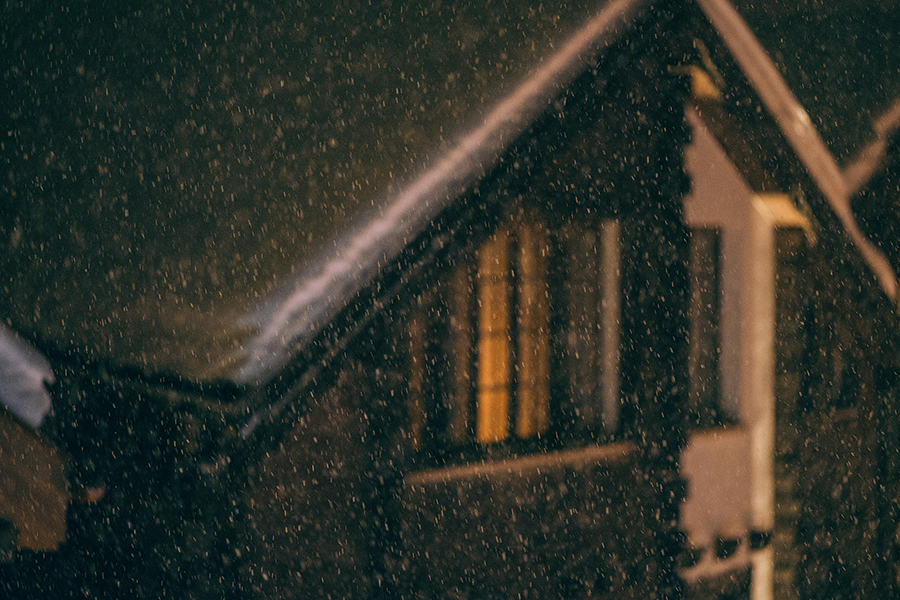
When shingles are installed on a new roof, they take some time to seal. Each shingle has a seal on its top surface. When another shingle is placed on top of the one below, it adheres to this seal. Following installation, shingles require a certain period of time for the seal to take effect. Typically, the shingles seal on warmer, sunny days. Most manufacturers say to give a roof up to 45 days for a seal to take effect. In the wintertime, shingles may take longer to seal since sunny days are fewer and further between.
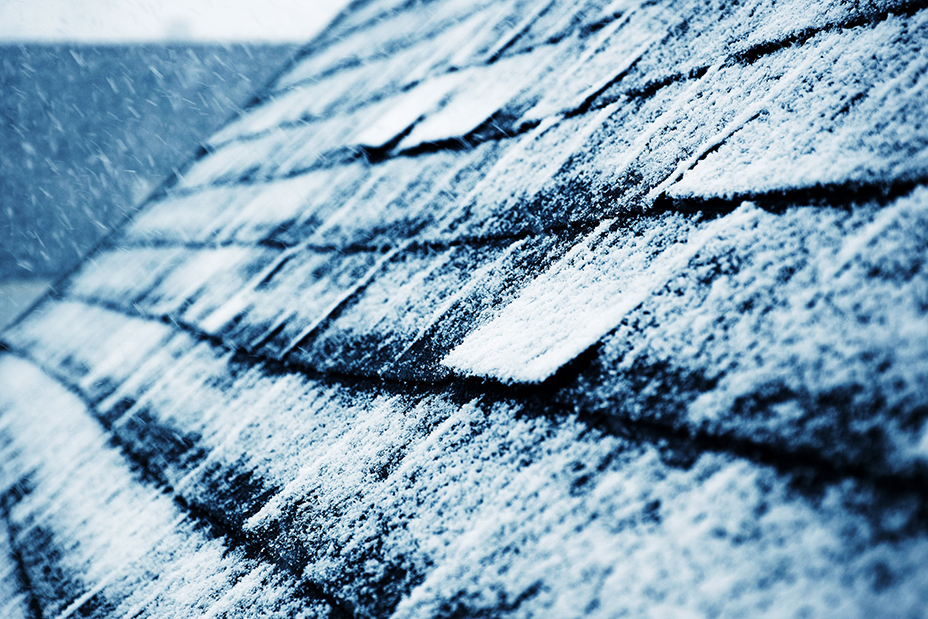
Shingles are highly susceptible to temperature fluctuations. If the night prior to installation is cold, shingles can harden and become more like blocks as opposed to being pliable which is preferable for installation. As a result, they are more difficult to install following a series of cold nights.

It is important to understand, however, that the roof is still effective against the weather during the period prior to the seal taking full effect. A roof begins protecting against the elements immediately following installation.
The seal is what sets the shingles into place, so when it has taken full effect, ripples created during installation disappear. Basically, it primarily affects the aesthetic of the roof prior to adhesion.
installation of other roof systems in winter
metal roofs
Metal roofs are perhaps the least affected roof system when it comes to winter roofing, with the exception of harsh winter conditions. Cold temperatures do not affect metal like they do other materials. While it may be more difficult to work in cold conditions, the panels themselves are not significantly affected by temperature fluctuations. Again, the only thing to keep in mind is the forecast, as a snowstorm in the middle of an installation of any roofing system project could pose significant complications.
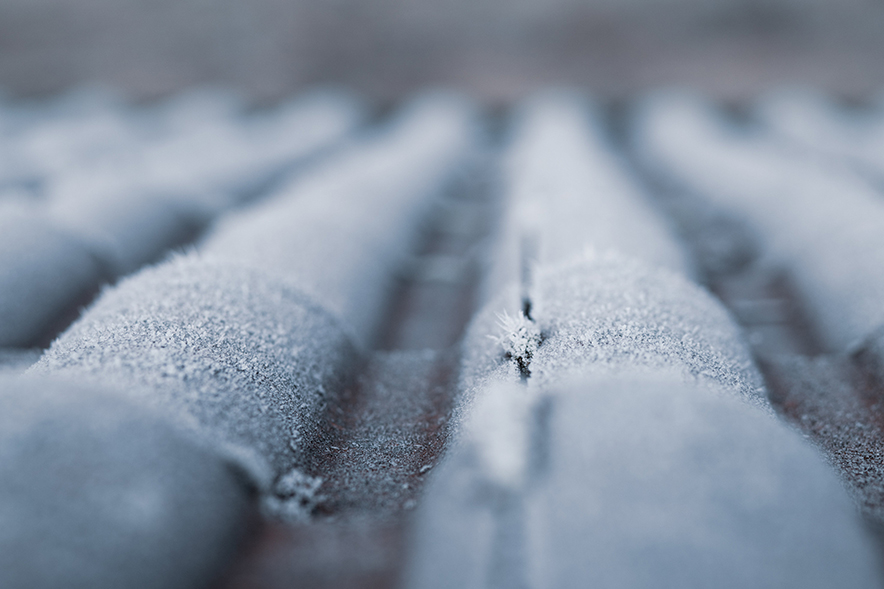
rubber membrane (epdm) roofs
The only roofing system installation that is typically avoided during the winter roofing season is rubber. This is because rubber membranes are extremely sensitive to temperature, needing warm daily temperature highs for proper adhesion.
The membrane must be pliable for efficient installation. Cold temperatures significantly reduce the flexibility of the material. As such, rubber membranes typically require a stretch of warmer days to install in the wintertime.
As with other roof system materials, rubber membranes need to be stored in a warm environment the night prior to installation. Neglecting to do so will not only complicate, if not prevent, proper installation, but will also expose the membrane to the risk of tearing.
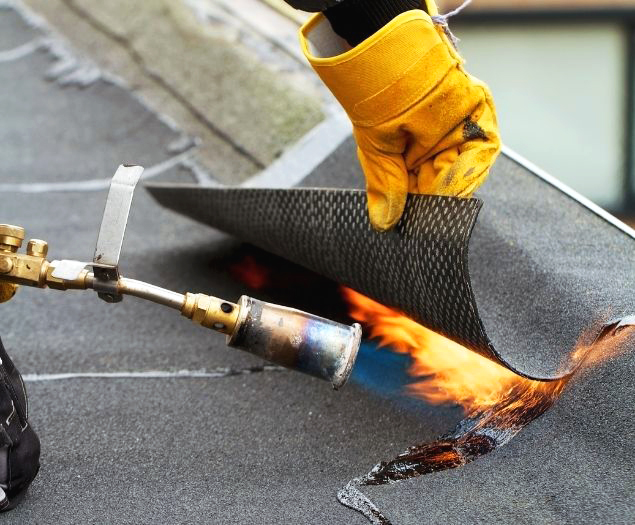
With that being said, rubber membrane roofs are definitely not definitively exempt from wintertime installation. An experienced roofing contractor will replace a rubber membrane in an emergency situation and take the necessary steps to ensure a quality finished product, regardless of the season.
Material suppliers are continuously manufacturing more efficient products; and rubber roof membranes are no exception. With the development of more weather-resistant features, rubber roofs are being made to withstand lower and lower temperatures for installation.
tpo roofs
TPO roofs can be efficiently installed during the winter months as long as they are stored overnight prior to the day of installation above a certain temperature. This ensures that the material is pliable enough for proper installation.
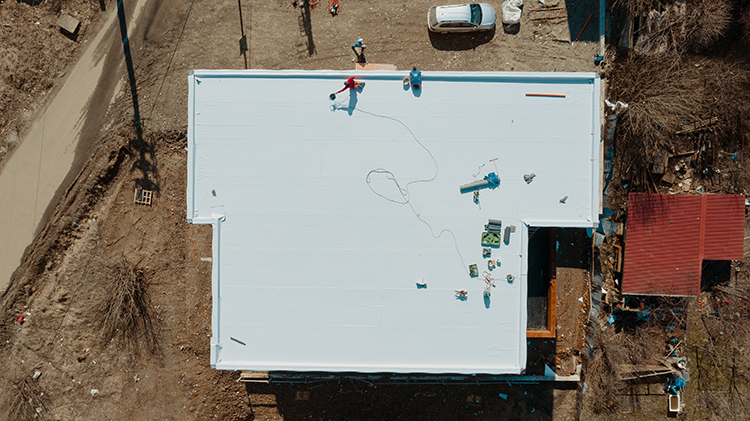
the importance of choosing the right roofing contractor
Since winter roofing is a bit trickier by nature, it is extremely important to hire an experienced contractor who understands both the potential complications and the necessary procedures and components of winter roofing.
Weather Stop Roofing serves both residential homeowners and commercial business owners year-round. Furthermore, we work with new construction developers in all seasons. We have been providing our roofing services to Greater Cincinnati since 2007, with 30+ years of experience in the construction industry prior to founding our company. As such, we are extremely familiar with winter roofing and confident in our ability to provide quality roof repairs, replacements, and installations in the winter months.
All roofs we replaced come with our Lifetime Material Installer’s Water-Tight Warranty, which is guaranteed for the life of your new roof, regardless of the time of year it is installed.
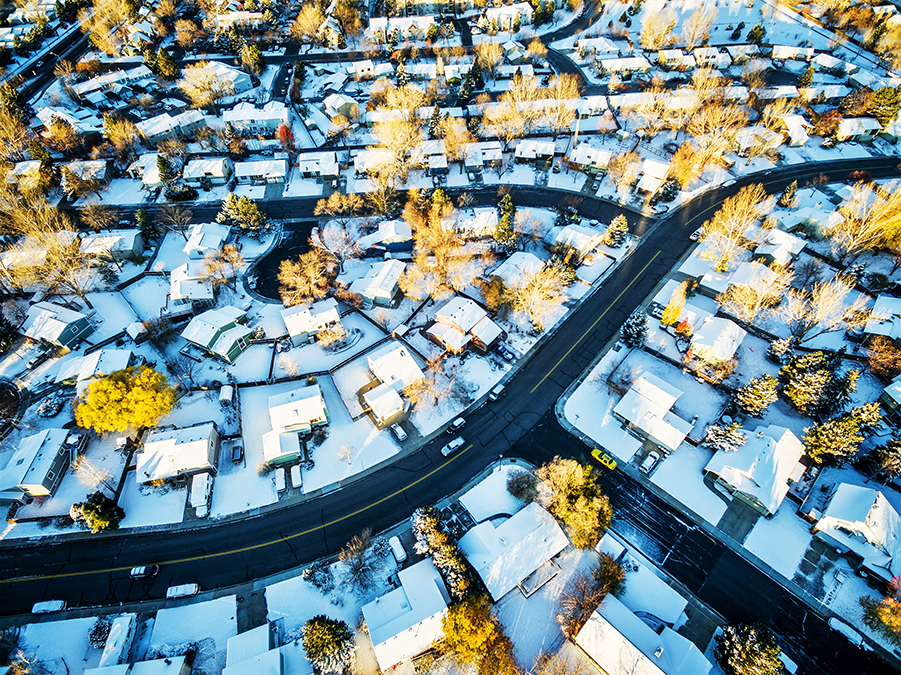
If you’re concerned that your roof repair or replacement cannot wait until the springtime, give us a call and we will come out and provide you with a free inspection and estimate. We will advise on scheduling, taking both the forecast and the condition of your roof into consideration.
No matter the season, we guarantee quality workmanship and expert installations.
Trust Weather Stop Roofing, Greater Cincinnati’s leading roofing specialists, when you want quality, expertise, and competitive pricing year-round.
Winter Roofing Blog
by Weather Stop Roofing™
How does winter roofing work? Roof replacements do take place in the winter, but there are some important factors to take into consideration. In this article we take a deeper look at the ins and outs of roofing in the winter season.
is winter roofing possible?
It’s no surprise that winter is not the optimal season for roof installations. With harsher weather conditions and shorter days, roofing projects tend to be more difficult and take a bit longer. However, it is absolutely possible to replace a roof during the winter months. In fact, many high-quality roofs are installed in the wintertime.
New construction roofs take place year-round. However, because winter conditions are the least optimal for roof installation, roof replacements during this time of the year are most often done in either emergency situations or if putting off a repair/replacement will cause significantly more damage and money in the long run.

For example, if snow and ice are causing an active leak, it is highly advised to have a repair, or a replacement as necessary, completed as soon as possible. Leaks without immediate attention can not only damage the interior of your home but can also contribute to a wider extent of damage to your roof and drive up the cost of restoration.
This is especially true in the winter season. When you consider the stress put on your roof from the extra weight of snow and ice, you will find that unaddressed repairs can quickly go from an easy fix to a costly restoration.
how does forecast play a role in winter roofing?
Due to the fact that cold temperatures effect the pliability of roofing materials, the forecast plays a huge role in scheduling a winter roof repair. Typically, contractors will try to schedule a new roof installation after a relatively warm night so that materials are easier to efficiently install.

Just as roof installations are scheduled around rain in the warmer months, winter installations must be scheduled around snow and ice storms. This can become even trickier as installations require a clear roof. That is, a roof must be free of snow in order for an installation to take place. This sometimes means waiting several days or longer following a snowstorm to begin an installation or repair project.

Experienced contractors will schedule an installation keeping future forecast in mind. Since winter roofing often takes a bit more time and effort as compared to roofing in the warm seasons, it requires more careful consideration of the forecast. It is important to keep in mind that forecasts can change often and dramatically. You and your contractor should look further out into the forecast when determining the optimal start date for your roofing project. The type of roofing system will also play a key role in planning.
Please do not attempt to clear snow off your roof in preparation for an installation or repair. Roofs can become extemely slick and dangerous when they hold snow, ice, or water. Furthermore, if you are planning on having work done on your roof, its integrity may be compromised and not visible under snow and ice. For your safety, always allow snow and ice to melt naturally so your gutter system can expel excess water properly.
shingle roof installation in winter
Shingle roofs are absolutely installable in the wintertime. As a matter of fact, they are the most commonly-installed winter roofs. That being said, there can be some complicating factors associated with shingle installation in the winter months.

Shingles are highly susceptible to temperature fluctuations. If the night prior to installation is cold, shingles can harden and become more like blocks as opposed to being pliable which is preferable for installation. As a result, they are more difficult to install following a series of cold nights.

When shingles are installed on a new roof, they take some time to seal. Each shingle has a seal on its top surface. When another shingle is placed on top of the one below, it adheres to this seal. Following installation, shingles require a certain period of time for the seal to take effect. Typically, the shingles seal on warmer, sunny days. Most manufacturers say to give a roof up to 45 days for a seal to take effect. In the wintertime, shingles may take longer to seal since sunny days are fewer and further between.

It is important to understand, however, that the roof is still effective against the weather during the period prior to the seal taking full effect. A roof begins protecting against the elements immediately following installation.
The seal is what sets the shingles into place, so when it has taken full effect, ripples created during installation disappear. Basically, it primarily affects the aesthetic of the roof prior to adhesion.
installation of other roof systems in winter
metal roofs
Metal roofs are perhaps the least affected roof system when it comes to winter roofing, with the exception of harsh winter conditions. Cold temperatures do not affect metal like they do other materials. While it may be more difficult to work in cold conditions, the panels themselves are not significantly affected by temperature fluctuations. Again, the only thing to keep in mind is the forecast, as a snowstorm in the middle of an installation of any roofing system project could pose significant complications.

rubber membrane (epdm) roofs
The only roofing system installation that is typically avoided during the winter roofing season is rubber. This is because rubber membranes are extremely sensitive to temperature, needing warm daily temperature highs for proper adhesion.
The membrane must be pliable for efficient installation. Cold temperatures significantly reduce the flexibility of the material. As such, rubber membranes typically require a stretch of warmer days to install in the wintertime.
As with other roof system materials, rubber membranes need to be stored in a warm environment the night prior to installation. Neglecting to do so will not only complicate, if not prevent, proper installation, but will also expose the membrane to the risk of tearing.

With that being said, rubber membrane roofs are definitely not definitively exempt from wintertime installation. An experienced roofing contractor will replace a rubber membrane in an emergency situation and take the necessary steps to ensure a quality finished product, regardless of the season.
Material suppliers are continuously manufacturing more efficient products; and rubber roof membranes are no exception. With the development of more weather-resistant features, rubber roofs are being made to withstand lower and lower temperatures for installation.
tpo roofs
TPO roofs can be efficiently installed during the winter months as long as they are stored overnight prior to the day of installation above a certain temperature. This ensures that the material is pliable enough for proper installation.

the importance of choosing the right roofing contractor
Since winter roofing is a bit trickier by nature, it is extremely important to hire an experienced contractor who understands both the potential complications and the necessary procedures and components of winter roofing.
Weather Stop Roofing serves both residential homeowners and commercial business owners year-round. Furthermore, we work with new construction developers in all seasons. We have been providing our roofing services to Greater Cincinnati since 2007, with 30+ years of experience in the construction industry prior to founding our company. As such, we are extremely familiar with winter roofing and confident in our ability to provide quality roof repairs, replacements, and installations in the winter months.
All roofs we replaced come with our Lifetime Material Installer’s Water-Tight Warranty, which is guaranteed for the life of your new roof, regardless of the time of year it is installed.

If you’re concerned that your roof repair or replacement cannot wait until the springtime, give us a call and we will come out and provide you with a free inspection and estimate. We will advise on scheduling, taking both the forecast and the condition of your roof into consideration.
No matter the season, we guarantee quality workmanship and expert installations.
Trust Weather Stop Roofing, Greater Cincinnati’s leading roofing specialists, when you want quality, expertise, and competitive pricing year-round.
Winter Roofing Blog
by Weather Stop Roofing™
We’re here to answer any and all of your questions. Please don’t hesitate to give us a call or shoot us an email to get the answers!
We want you to be in the know!
If you think you may need work done on your roof in the wintertime, reach out to us to schedule your FREE inspection and estimate! This is our slowest time of year, so we can respond to requests and complete emergency repairs quickly so your home doesn’t suffer any further damage.
We’re here to answer any and all of your questions. Please don’t hesitate to give us a call or shoot us an email to get the answers!
We want you to be in the know!
If you think you may need work done on your roof in the wintertime, reach out to us to schedule your FREE inspection and estimate! This is our slowest time of year, so we can respond to requests and complete emergency repairs quickly so your home doesn’t suffer any further damage.

